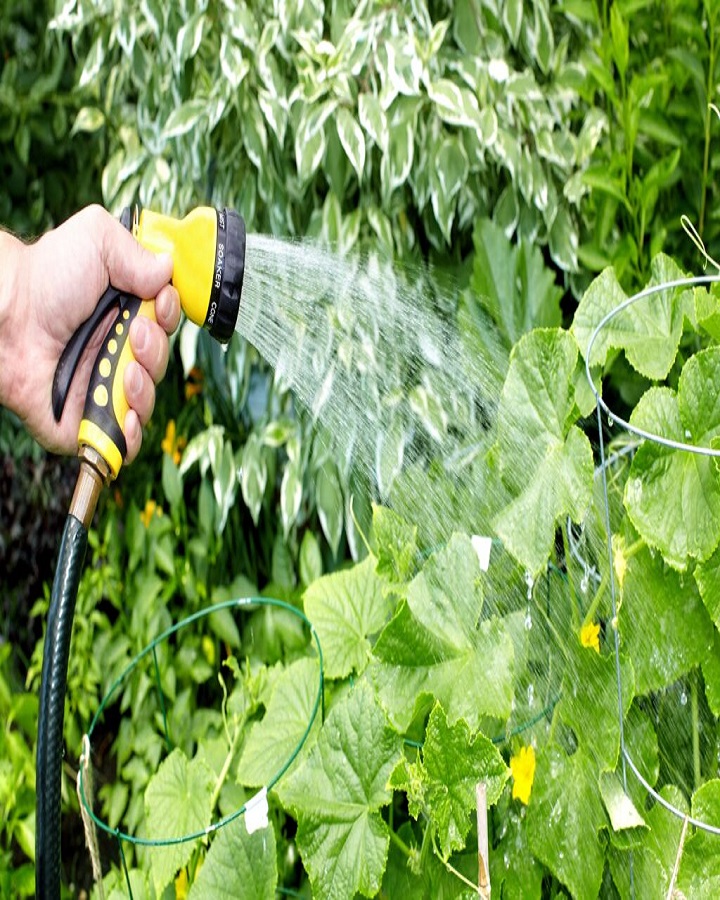
Image Credit – Hema
Learning how to water your garden properly is essential for maintaining healthy plants and maximizing growth. Whether you’re caring for vegetables, flowers, or shrubs, using the right watering techniques can make a big difference in your garden’s success. In this guide, we’ll explore simple yet effective tips to help you hydrate your garden the right way.
Watering might seem like the easiest gardening task, but there’s more to it than simply turning on a hose. Knowing how to water your garden the right way can significantly impact plant health, reduce water waste, and save time. Whether you’re growing vegetables, flowers, or shrubs, the goal is to keep plants hydrated without overwatering or underwatering.
How to water your garden

Here’s a comprehensive guide on how to water your garden effectively.
1. Understand Your Garden’s Needs
The first step in learning how to water your garden is to understand what your specific plants need. Different plants have different water requirements. For example, tomatoes and cucumbers need more frequent watering than drought-tolerant herbs like rosemary or thyme.
Observe your garden and get to know your plants. Check plant tags or do a quick search to learn how much water each type requires. Grouping plants with similar needs together makes it easier to water efficiently.
2. Water Deeply, Not Daily
A common mistake many gardeners make is watering too often but not deeply enough. Instead of shallow, daily watering, aim for a deep soak a few times a week. This encourages roots to grow deeper into the soil, making plants more drought-resistant and healthier overall.
If you’re unsure how to water your garden deeply, here’s a simple tip: apply enough water so it reaches 6–8 inches into the soil. You can check this by inserting a long stick or screwdriver into the ground—if it penetrates easily, the soil is moist.
3. Water Early in the Day
Timing is everything when it comes to how to water your garden. The best time to water is early in the morning. Cooler temperatures mean less water loss through evaporation, and plants have time to dry off before nightfall, which helps prevent fungal diseases.
Evening watering is your second-best option, but avoid watering during the hottest part of the day. Midday watering leads to more evaporation and can stress plants.
4. Use the Right Tools
Choosing the right tools makes a big difference in how you water your garden. Here are a few options to consider:
- Soaker hoses: Great for garden beds. They deliver water directly to the soil with minimal waste.
- Drip irrigation: Ideal for precise watering. It targets the roots and reduces water usage.
- Watering cans or hose with a spray nozzle: Good for small gardens or container plants.
- Watering cans or hose with a spray nozzle: Good for small gardens or container plants.
Avoid using high-pressure nozzles directly on your plants, as they can damage foliage and displace soil.
5. Add Mulch to Conserve Moisture
Want to make watering easier? Add mulch! Mulching helps retain soil moisture, reduce evaporation, and regulate soil temperature. Organic mulch like shredded bark, straw, or compost is ideal. Spread a 2–3 inch layer around your plants, but keep it a few inches away from the stems to avoid rot.
Mulching not only helps with how to water your garden less frequently but also improves soil health over time.
6. Check the Soil Before Watering
Before watering, always check the soil to see if it’s actually dry. Stick your finger about 2 inches into the soil. If it feels dry at that depth, it’s time to water. Overwatering can lead to root rot and other issues, so this step is essential for maintaining a healthy garden.
7. Adjust Your Watering SeasonallyHow you water your garden will change with the seasons. In cooler spring or fall weather, you may need to water less often. In the heat of summer, especially during dry spells, you’ll likely need to water more frequently. Keep an eye on rainfall and adapt as needed.
Learning how to water your garden properly is one of the most important gardening skills. By watering deeply, using the right tools, and adjusting your routine with the seasons, you can grow stronger, more resilient plants while conserving water. A well-watered garden is a happy garden—and one that will reward you with beauty and bounty all season long.
Mastering how to water your garden doesn’t need to be complicated. With the right timing, method, and frequency, you can keep your garden lush and thriving all season long. Have any tips or questions of your own? Let us know in the comments below—we’d love to hear how you care for your garden!
Frequently Asked Questions
What is the best time of day to water your garden?
The best time to water your garden is early in the morning. Watering early allows the moisture to soak into the soil before the sun evaporates it, and it prevents fungal diseases that thrive in damp conditions overnight.
How often should you water your garden in the summer?
When learning how to water your garden in summer, consider your soil type and plant needs. Typically, deep watering 2-3 times per week is better than daily shallow watering, as it encourages deeper root growth.
Is it better to water your garden with a hose, sprinkler, or drip irrigation?
Each method has pros and cons, but if you’re serious about learning how to water your garden efficiently, drip irrigation is ideal. It delivers water directly to the roots, reducing waste and disease risk.







